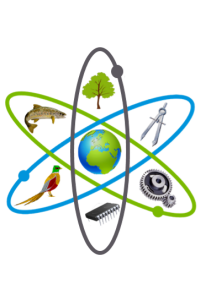Immunostimulatory and Immunomodulatory Effects of Nitzschia navis-varingica, Heterocapsa pygmaea and Chrysochromulina alifera Whole Cell Extracts on Mammalian Macrophage Cells
Immunostimulatory and Immunomodulatory Effects of Nitzschia navis-varingica, Heterocapsa pygmaea and Chrysochromulina alifera Whole Cell Extracts on Mammalian Macrophage Cells
Microalgae, macrophages, inflammation, natural drugs immunomodulation,
___
- Amaro, H.M., Barros, R., Guedes,A.C., Sousa-Pinto, I. & Malcata,F.X. (2013). Microalgal compounds modulate carcinogenesis in the gastrointestinal tract. Trends in Biotechnology, 31, 92-98.
- Bisen, P. (2012). Marine Microbes: Unexplored Therapeutic Biomine. J Cancer Sci Ther, Vol. 4, pp. 14121-14127
- Broide, D. H. (2009). Immunomodulation of Allergic Disease. Annu Rev Med., 60, 279-291.
- Calder, P.C. (1996). Immunomodulatory and anti-inflammatory effects of n-3 polyunsaturated fatty acids. Sir david cuthbertson medal lecture, Proceedings of the Nutrition Society.55:737–774.
- Calder, P.C. (2012). Omega-3 polyunsaturated fatty acids and inflammatory processes: nutrition or pharmacology? Br J Clin Pharmacol. 75: 645–662.
- Ciferri, O. (1983). Spirulina, the edible microorganism. Microbiol. Rev. 47: 551–578.
- Capelli, B., Cysewski, G.R. (2010) Potential health benefits of spirulina microalgae*. Nutrafoods, vol. 9, pp. 19-26.
- Chung, H.Y., Cesari, M., Anton, S., Marzetti, E., Giovannini, S., Seo, A.Y., Carter, C., Yu, B.P. (2009). LeeuwenburghC. Molecular inflammation: underpinnings of aging and age-related diseases. Ageing Res Rev. 8:18–30.
- Dantas,D.C.M., Kaneno, R. & Queiroz, M.L.S. (1999). The effects of Chlorella culgaris in the protection of mice infected with Listeria Monocytogenes. Role of Natural Killer Cells. Immunopharmacology and Immunotoxicology, 21, 609-619.
- Del Prete, A., Allavena, P., Santoro, G., Fumarulo, R., Corsi, M.M., Mantovani, A. (2011). Molecular pathways in cancer-related inflammation. Biochem Med (Zagreb). 21:264–275.
- Guzmán, S., Gato, A., Lamela, M., Freire-Garabal, M., Calleja, J.M. (2003). Anti-inflammatory and immunomodulatory activities of polysaccharide from Chlorellastigmatophora and Phaeodactylum tricornutum. Phytotheraphy Research,17, 665–670.
- Gasiunaite, Z.R., Cardoso, A.C., Heiskanen, A.S., Henriksen, P. and others (2005). Seasonality of coastal phytoplankton in the Baltic Sea: influence of salinity and eutrophication. Estuar Coast Shelf Sci 65:239–252.
- Gigova, L.,&G. Marinova, G. (2016). Sıgnıfıcance of Microalgae – Grounds And Areas Genetics and Plant Physiology , 6(1–2), 85–100.
- Hancock, R. E. W.; Nijnik, A. & Philpott, D.J. (2012). Modulating immunity as a therapy for bacterial infections. Nat Rev Microbiol. 10, 243-254.
- Hasegawa, T., Ito, K., Ueno, S., Kumamoto, S., Ando, Y., Yamada, A., Nomoto, K., Yasunobu, Y. (1999). Oral administration of hot water extracts of Chlorella vulgaris reduces IgE production against milk casein in mice. International Journal of Immunopharmacology 21: 311-323.
- Iwalewa, E.O.; McGaw, L. J.; Naidoo, V. and Eloff, J. N. (2007). Inflammation: the foundation of diseases and disorders. A review of phytomedicines of South African origin used to treat pain and inflammatory condition. Afr. J. Biotechnol. Vol. 6 (25), pp. 2868-2885.
- Iwataki, M., Hansen, G., Sawaguchi, T., & Fukuyo, Y. (2004). Investigations Of Body Scales İn Twelve Heterocapsa Species (Peridiniales, Dinophyceae), including A New Species Heterocapsa pseudotriquetra sp. nov. Phycologia, 43 (4), 394-403.
- Jugdutt, B.I. (2007). Cyclooxygenase inhibition and adverse remodeling during healing after myocardial infarction. Circulation. 115:288–291.
- Julier, Z.; Park, A. J.; Briquez, P.S.; Martino, M.M. (2017). Promoting Tissue Regeneration by Modulating the Immune System. Acta Biomaterialia.1-42.
- Kaufmann, T. and Simon H. U. (2015). Targeting disease by immunomodulation.Cell Death Differ. 22, 185–186.
- Khalil, D. N.; Smith, E. L.; Brentjens, R. J., & Wolchok, J. D. (2016). The future of cancer treatment: immunomodulation, CARs and combination immunotherapy. Nat. Rev. Clin. Oncol.13(5), 273–290.
- Ku, C.S., Pham, T.X., Park, Y., Kim, B., Shin, M., Kang, I.&Lee, J. (2013). Edible blue-green algae reduce the production of proinflammatory cytokines by inhibiting NF-κB pathway in macrophages and splenocytes.Biochim Biophys Acta. 1830: 2981–2988.
- Lundholm, N. & Moestrup, Ø. (2000). Morphology of the marine diatom Nitzschia navis-varingica, sp. nov. (Bacillariophyceae), another producer of the neurotoxin domoic acid. Journal of Phycology 36: 1162-1174.
- Miyata, J. & Arita, M. (2015). Role of omega-3 fatty acids and their metabolites in asthma and allergic diseases. Allergology International 64 27e34.
- Mohd Azamai, E.S., Sulaiman, S., Mohd Habib, S.H., Looi, M.L., Das, S, Abdul Hamid, N.A., Wan, Ngah, W.Z., Mohd Yusof, Y.A. (2009). Chlorella vulgaris triggers apoptosis in hepatocarcinogenesis-induced rats. Journal of Zhejiang University SCIENCE B, 10: 14-21.
- Parke, M., Manton, I., & Clarke, B. (1956). Studies on marine flagellates. III. Three further species of Chrysochromulina. Journal of the Marine Biological Association of the United Kingdom, 35(2), 387-414.
- Peng J., Yuan J-P., Wu C-F. & Wang J-H. (2011). Fucoxanthin, a marine carotenoid present in brown seaweeds and diatoms: metabolism and bioactivities relevant to human health. Mar. Drugs 2011, 9, 1806-1828.
- Priyadarshani, I. & Rath, B. (2012). Commercial and industrial applications of micro algae – A review. J. Algal Biomass Utln. 2012, 3 (4): 89–100.
- Puigserver, M., Chrétiennot-Dinet, M.J., & Nezan, E. (2003). Some Prymnesiaceae (Haptophyta, Prymnesiophyceae) From The Mediterranean Sea, With The Description Of Two New Specıes: Chrysochromulina lanceolata sp. nov. andC. pseudolanceolata sp. Nov. Journal Of Phycology, 39, 762-774.
- Sakai, S., Sugawara, T., Hirata, T. (2011). Inhibitory effect of dietary carotenoids on dinitrofluorobenzene-induced contact hypersensitivity in mice. Biosci. Biotechnol. Biochem.75, 1013–1015.
- Talero, E., García-Mauriño, S., Ávila-Román, J., Rodríguez-Luna, A., Alcaide, A., Motilva, V. (2015). Bioactive Compounds Isolated from Microalgae in Chronic Inflammation and Cancer.Mar. Drugs 13, 6152-6209.
- Tan, T.T.; Coussens, L.M. (2007). Humoral immunity, inflammation and cancer. Curr. Opin. Immunol. 19 (2), 209-216.
- Yates, C.M., Calder, P.C., Ed Rainger, G. (2014). Pharmacology and therapeutics of omega-3 polyunsaturated fatty acids in chronic inflammatory disease. Pharmacol Ther. 141:272e82.
- ISSN: 2458-8989
- Başlangıç: 2015
- Yayıncı: Cemal TURAN
New Records of Porpita porpita (Linnaeus, 1758) (Cnidaria: Hydrozoa) in the Mediterranean Sea
Antonio Oscar LİLLO, Francesco TİRALONGO, Elena TONDO
Clare Marie MİFSUD, Adriana VELLA
Deniz AYAS, Nuray ÇİFTÇİ, Hasan Deniz AKBORA
Glucose Oxidase Applications and Comparison of the Activity Assays
Sandra Agius DARMANİN, F. Saadet KARAKULAK, Adriana VELLA
Artificial Neural Networks Method for Prediction of Rainfall-Runoff Relation: Regional Practice
Fatih ÜNEŞ, Levent KESKİN, Mustafa DEMİRCİ
Mehmet Cengiz DEVAL, Mustafa Tunca OLGUNER
First Record of Pomacanthus imperator (Bloch, 1787) from Turkish Marine Waters
